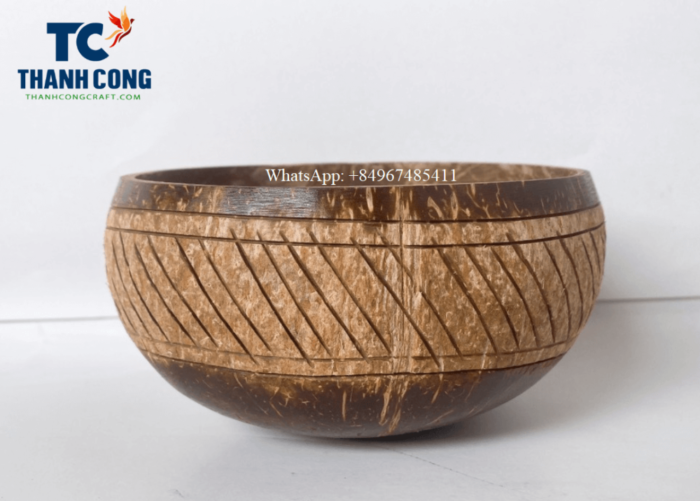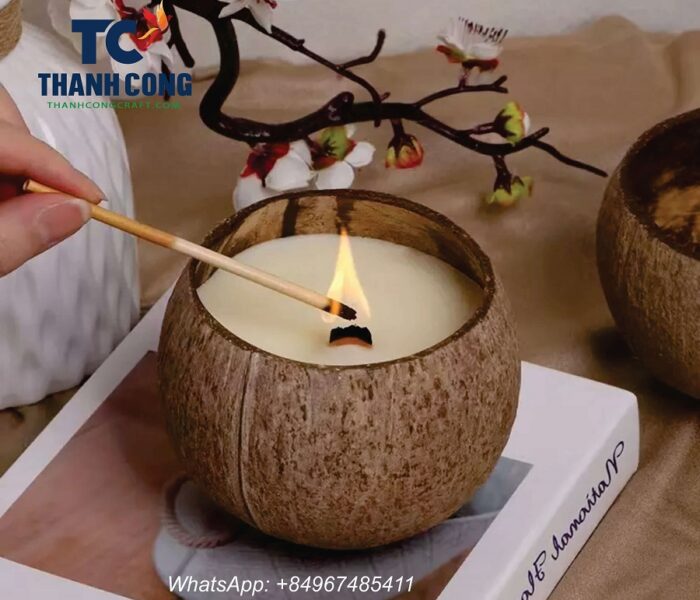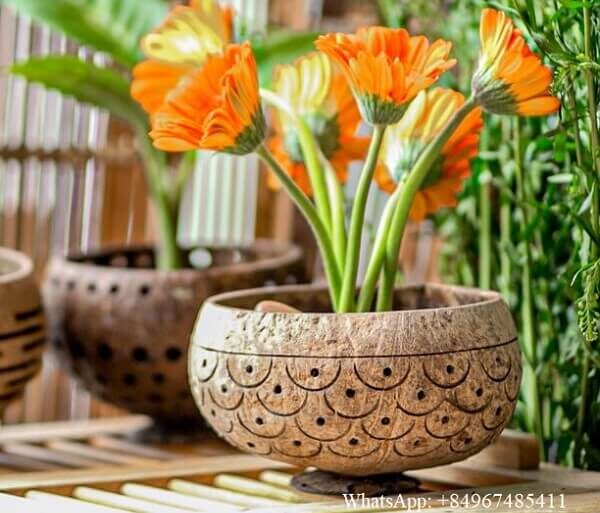Contents [hide]
1. What is the point of a coconut bowl?
A coconut bowl is a type of bowl made from a hollowed-out coconut shell. The point of a coconut bowl is primarily aesthetic and environmental. Here are some of the main reasons why people use coconut bowls:
- Sustainable: Using a coconut bowl is an eco-friendly alternative to plastic or ceramic bowls, as they are made from a natural and renewable resource.
- Unique and stylish: Coconut bowls have a distinct look that can add a natural and exotic touch to your table setting. Each coconut bowl is unique in color and pattern, making them a conversation starter.
- Versatile: Coconut bowls are suitable for a wide range of foods, including smoothie bowls, salads, soups, and desserts.
- Lightweight: Coconut bowls are lightweight, making them easy to carry, store, and transport.
- Biodegradable: Coconut bowls are fully biodegradable, which will break down over time and not contribute to environmental pollution.
In summary, the point of a coconut bowl is to provide an eco-friendly and stylish alternative to traditional bowls while also being versatile, lightweight, and biodegradable.

2. Are coconut bowls healthy?
Coconut bowls are generally considered a healthy option for serving food, as they are made from natural, biodegradable materials and do not contain any harmful chemicals or toxins. Coconut bowls are made by carving out the inner flesh of a coconut and polishing it until it becomes smooth and shiny.
Regarding nutrition, coconut bowls have no particular health benefits or drawbacks, as they are simply a vessel for holding food. However, using natural materials like coconut bowls can enhance the overall eating experience by making it feel more connected to nature.
It’s important to note that the healthiness of the food you put into the coconut bowl is what matters. Choosing nutritious, whole foods like fruits, vegetables, whole grains, and lean proteins will give your body the vitamins, minerals, and other nutrients needed to stay healthy.

3. Can you reuse coconut bowls?
Yes, you can reuse coconut bowls! Coconut bowls are a sustainable and eco-friendly alternative to traditional bowls made from plastic or ceramic. They are made from discarded coconut shells, cleaned and polished to create beautiful and functional bowls.
Coconut bowls are durable and can be reused many times. They are also easy to clean; wash them with warm soapy water and let them dry. However, it is essential to note that coconut bowls are not dishwasher safe and should not be soaked in water for long periods as this can cause them to crack or warp.
In addition to using coconut bowls as regular serving bowls for food, they can be used as decorative items, planters, or other creative purposes. So, not only are coconut bowls a sustainable choice, but they can also add a unique and natural touch to your home or kitchen.
4. What is the story behind the coconut shell bowl?
Coconut shell bowls have been used for thousands of years in many cultures and have a fascinating history. The coconut palm tree is often called the “tree of life” because it provides food, drink, shelter, and clothing to people in tropical regions. The coconut shell is a byproduct of the fruit, and historically it was considered waste.
However, people soon realized that the coconut shell was a versatile material that could be used for various purposes. One of these purposes was making bowls. The coconut shells were lightweight, durable, and easily shaped into bowls by artisans. They were also a sustainable and eco-friendly option since they were made from a natural material abundant in the local environment.
Coconut shell bowls were used for various purposes, from serving food and drink to decorative purposes. In some cultures, they were also used for religious or spiritual ceremonies. In Polynesia, for example, coconut shell bowls were used in rituals to honor the gods and symbolize fertility and prosperity.
Today, coconut shell bowls are still popular, particularly in areas where coconuts are abundant. They have also become popular in western countries as a sustainable alternative to plastic bowls and as a stylish and unique addition to home décor.
5. Are coconut bowls ethical?
Coconut bowls have become an eco-friendly and sustainable alternative to traditional bowls made from plastic or other materials. However, whether or not coconut bowls are ethical depends on how they are produced and sourced.
The use of coconut bowls can be considered ethical if the coconuts used to make them are sourced from sustainable and ethically-run farms or plantations. It is essential to ensure that the farmers who produce the coconuts are paid a fair wage and work in safe and healthy conditions.
However, it is essential to note that not all coconut bowls on the market are produced ethically. Some manufacturers may exploit workers or use unsustainable practices in creating coconut bowls, which can harm the environment.
Additionally, the popularity of coconut bowls has led to increased demand, which can sometimes lead to the over-harvesting of coconut trees. Therefore, ensuring that the coconuts used for making coconut bowls are sourced sustainably is essential.
To summarize, coconut bowls can be ethical if they are produced sustainably and ethically and if the coconuts used to make them are sourced from responsible and ethical sources. It is essential to do your research and choose a reputable brand that values honest and sustainable production practices.

6. Can you eat hot food out of coconut bowls?
Yes, you can eat hot food from coconut bowls, but it is essential to be careful. Coconut bowls are made from natural materials and are not heat-resistant, so they can become quite hot when filled with hot food.
If you want to eat hot food from a coconut bowl, you should take precautions to avoid burning yourself. You could let the food cool down before consuming it or use a utensil to stir the food and check the temperature before taking a bite. You could also hold the bowl by its base or use a cloth or oven mitt to handle it.
Hot liquids or soups can be particularly challenging to eat out of a coconut bowl because the heat can transfer quickly to the sides and bottom of the bowl. In such cases, transfer the food to a heat-resistant bowl or allow the food to cool down before eating.


